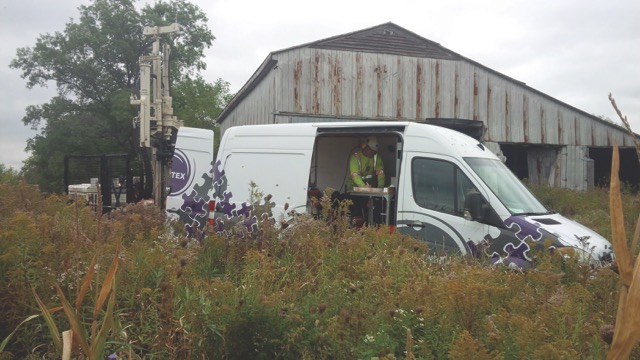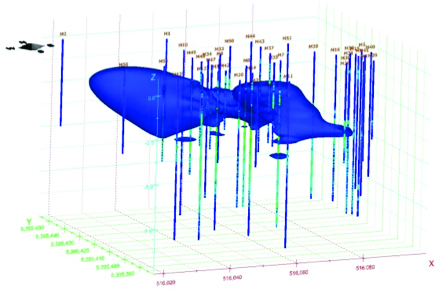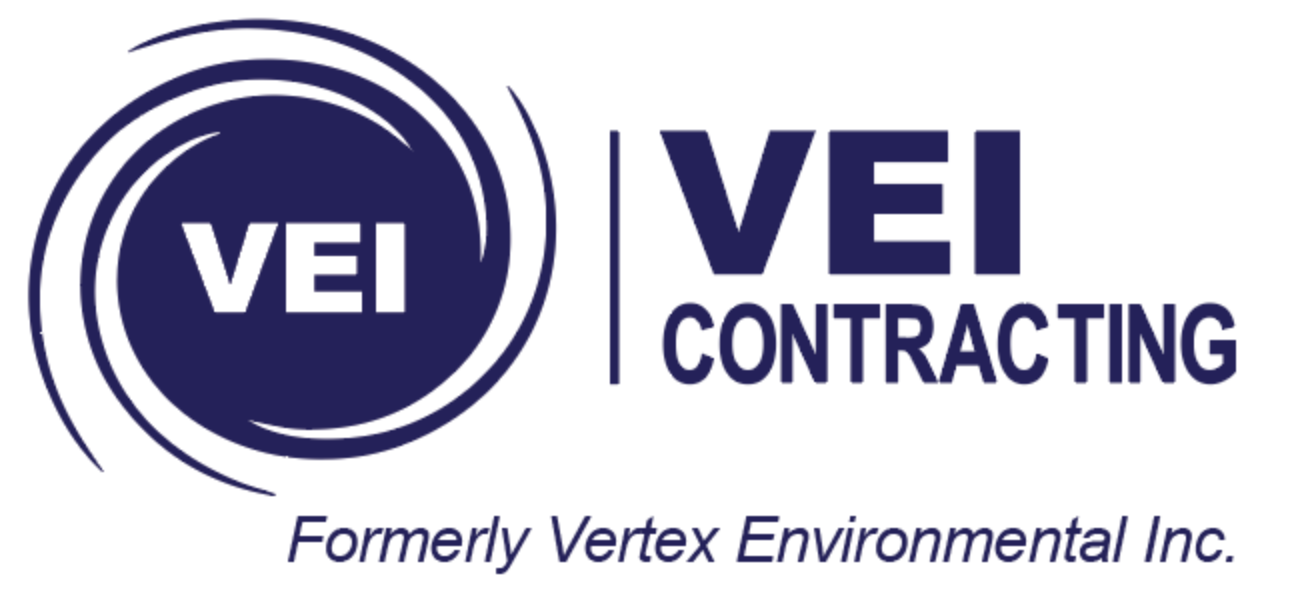
Overview
 A historic leak from a UST released over 19,000 L of gasoline directly into the subsurface over a five year period. Extensive borehole drilling and monitoring well installations were completed. A downgradient area of high PHC concentrations was discovered extending up to 26 meters below ground surface. Traditionally, this would serve as delineation of impacted zones however many data gaps were present for the Site. A new, innovative and cost efficient approach to delineation, both vertically and horizontally, was required to close the data gaps on-Site.
A historic leak from a UST released over 19,000 L of gasoline directly into the subsurface over a five year period. Extensive borehole drilling and monitoring well installations were completed. A downgradient area of high PHC concentrations was discovered extending up to 26 meters below ground surface. Traditionally, this would serve as delineation of impacted zones however many data gaps were present for the Site. A new, innovative and cost efficient approach to delineation, both vertically and horizontally, was required to close the data gaps on-Site.
The Vertex Approach
Vertex mobilized two high resolution characterization tools to the Site for rapid in-situ delineation. The first tool deployed was the Laser Induced Fluorescence (LIF) probe to identify any pockets or residual light non-aqueous phase liquid (LNAPL) that may still be present on-Site. The second tool, the Membrane Interface Probe (MIP), was deployed to delineate the vertical and horizontal extents of the dissolved-phase impacts. The MIP was able to rapidly and efficiently delineate where the data gaps existed on-Site.

